History of Burntisland Parish Church
Burntisland Parish Church has been a geographic and spiritual cornerstone of the town for more than 400 years and continues to play an active part in the life of the town and surrounding communities today. It stands out in history for hosting the General Assembly of the Church of Scotland in 1601 which eventually lead to the inception of the King James Bible (or Authorised Version) in 1611.
The church was established in 1592 and was originally known as Burntisland Kirk until 1929 when the Church of Scotland took in the Couper United Free Church which meant two Church of Scotland churches in the town. Burntisland Kirk became St. Columba's while the Couper United Free became St. Andrew's. It remained as this until 1977 when the two churches united to form Burntisland Parish Church.
The church is made visually distinctive by its unusual square shape, with a rich tapestry of features and stories woven throughout the fabric of the building.
If you cannot manage along to a service at 11.30 on a Sunday, then you can visit the church on Thursday, Friday, Saturday 2 - 4 pm from 1st June until 31 August. A church member will be there to give you a guided tour.
To visit outwith these hours and to arrange group visits contact Ann Smith, Tel: 01592 873 994, Mobile: 07999 306785, Email: annpatsmith96@gmail.com
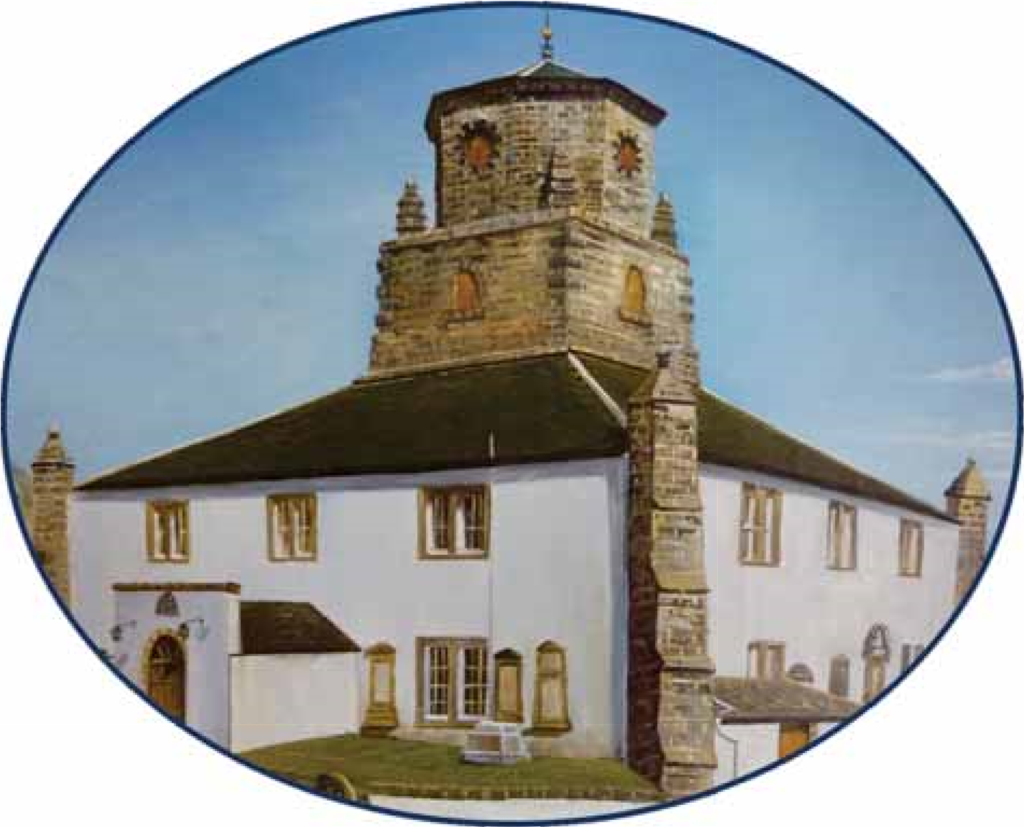
The Kirk of the Bible
Burntisland Parish Church is sometimes known as the Kirk of the Bible. How did a church, built on a haugh overlooking the sea, come by this title?
On the 12th May 1601 the General Assembly of the Church of Scotland met in Burntisland. At this time plague was rife in Edinburgh, among other places, and the meeting was moved to St. Andrews. However, King James VI injured himself in a hunting accident while staying at nearby Rossend Castle and as Burntisland had a clean bill of health, the assembly was called to meet in Burntisland Kirk. King Jmes VI attended and took an active part in its work.
During the course of the business the Scottish Prebsyters proposed a new English translation of the Bible, as this would make the Scriptures more accessible to the people.
This momentous occasion was captured in the minutes of the General Assembly:
"Sess, ultima. May 16, 1601. It being meinit by sundrie of the brethren that there were sundrie errors that meritit to be correctit in the vulgar translation of the Bible and of the psalms in meter, in the quhik heids of the Assembly, has concludit as follows ------ anent the translation of the Bible, that every ane of the bretherne, what has the best knowledge in the languages, employ their trevils in syndrie parts of the vulgar translation of the Bible that needs to be mendit, and to confer the same tgether at the next Assemblie".
His majesty heartily agreed to this proposal and the Assembly unanimously approved.
When Queen Elizabeth of England died in 1603, King James VI of Scotland took the throne as King James I of England. Work began on the new Bible in 1607 and it was published in 1611.
And so was born the King James or Authorised version of the Bible - perhaps the greatest translation of all time, which started in Burntisland Parish Church - The Kirk of the Bible.
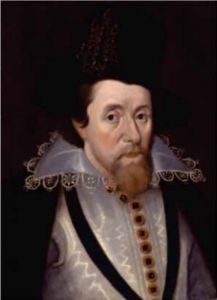

Laying the foundations: from Kirkton to Parish
In 1130 King David 1 of Scotland granted to Dunfermline Abbey "the Kingdom which is the nearer to Dunfermline". The first recorded church to serve the people of the area was consecrated in 1234by the Bishop of St. Andrews on the site which is now Church Street; in the Parish of Wester Kinghorn, now called Burntisland.
Today, Kirkton Church is a ruin consisting of a nave and choir with one side aisle. In 2015, Burntisland Community Council and Fife Council carried out restoration work on the church ruins. The result is a beautifully restored ruin, which can be visited and enjoyed by residents and visitors alike.

The Church Building
Burntisland was confirmed as a Royal Burgh in 1587 and King James VI agreed that a bigger church was needed to replace the small one at Kirkton. In 1589 the citizens of the town petitioned the Convention of Royal Burghs requesting support to build a church in the Burgh. In 1592 this permission was granted as was a right to a "tax on timber carried in ships using the harbour" for "support in biggin (building) of their Kirk". The building was built by the town and not the heir of the land.
The building of the new church was started shortly after in 1592. The main body of the church was completed in 1595 and it was probably usable by 1596.
John Roche is the stone mason responsible for building the church and is believed to have also been the architect. Burntisland Kirk was one of the first to be constructed in Scotland after the reformation and is the oldest post-reformation church still in use.
Its square plan, which is unique in Scotland, has people sitting in all four sides, with the pulpit and the communion table in the centre. This layout reflects the Reformers' belief that that preaching the Bible, Baptism and the Lord's Supper were all to be celebrated in the midst of the people of God.
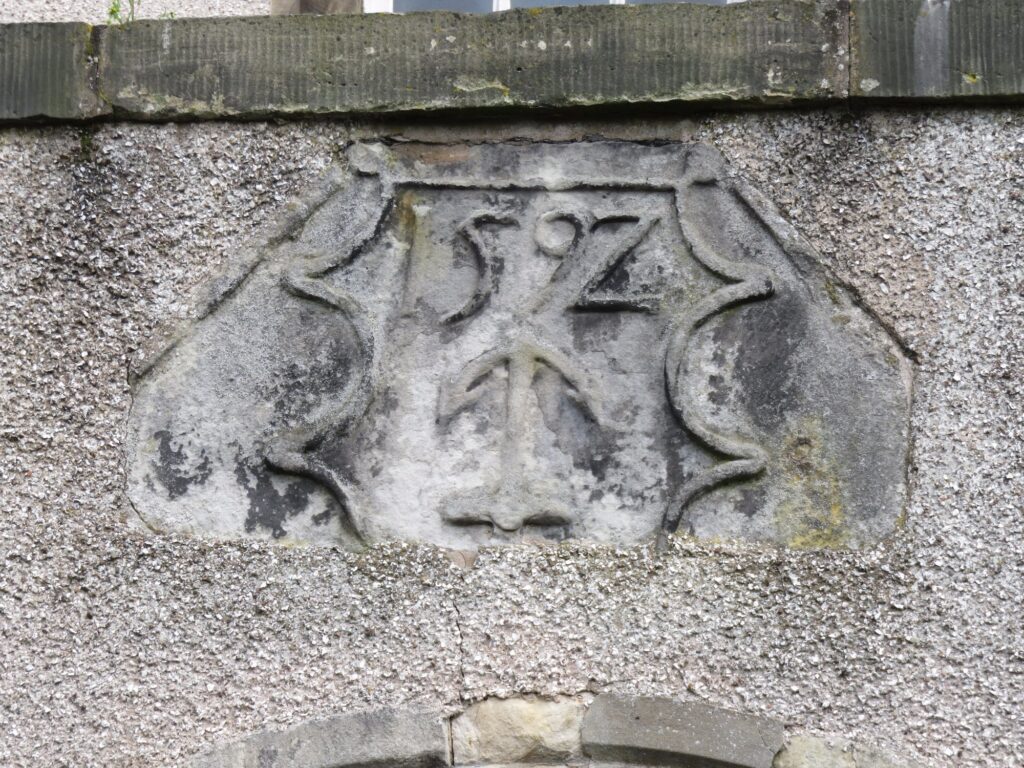
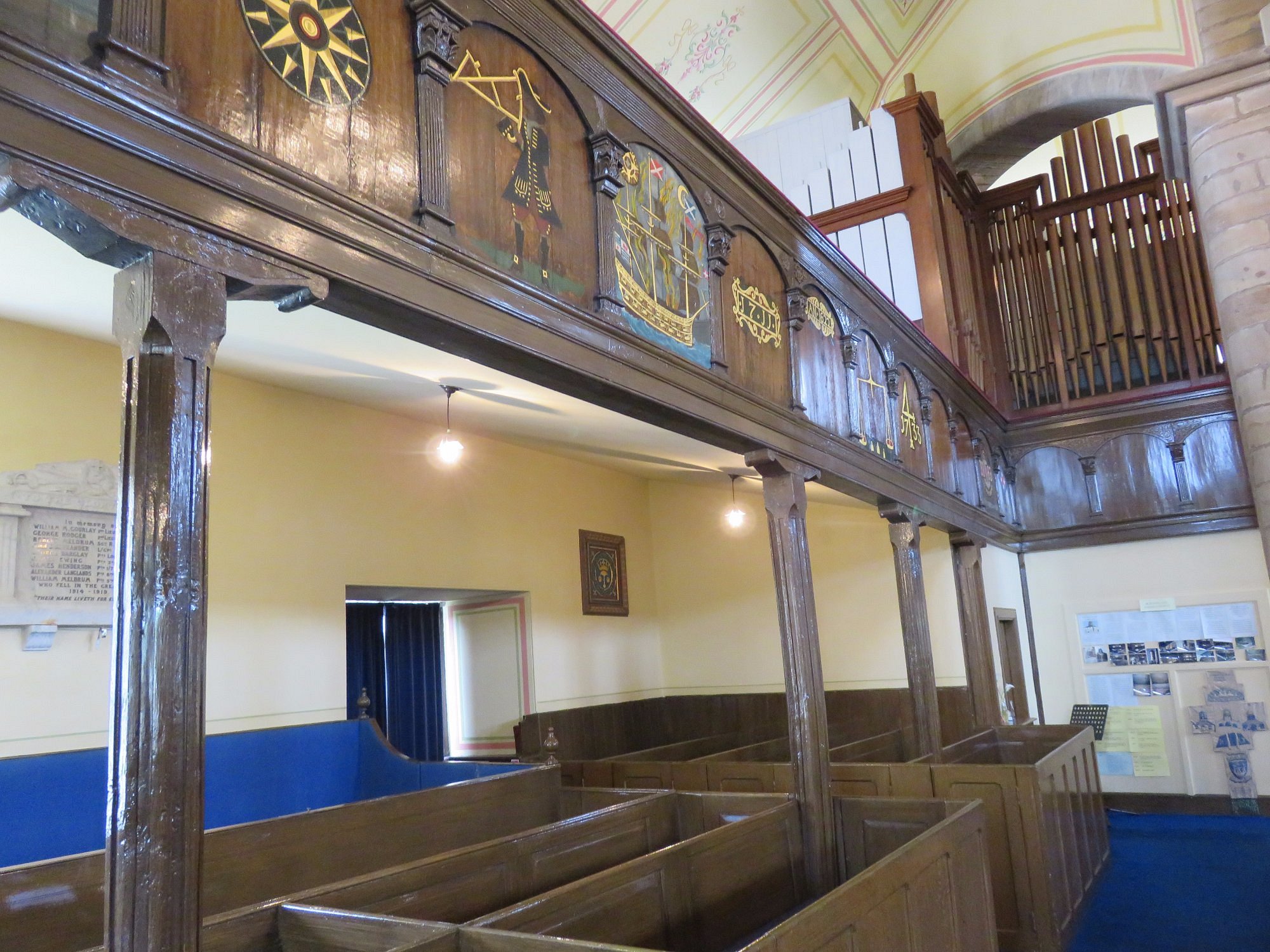
Interesting Features
Sailors' Gallery

To enable sailors to come into church and leave church to suit the tides there is a separate door into the sailors' gallery.
Shepherd's Pew
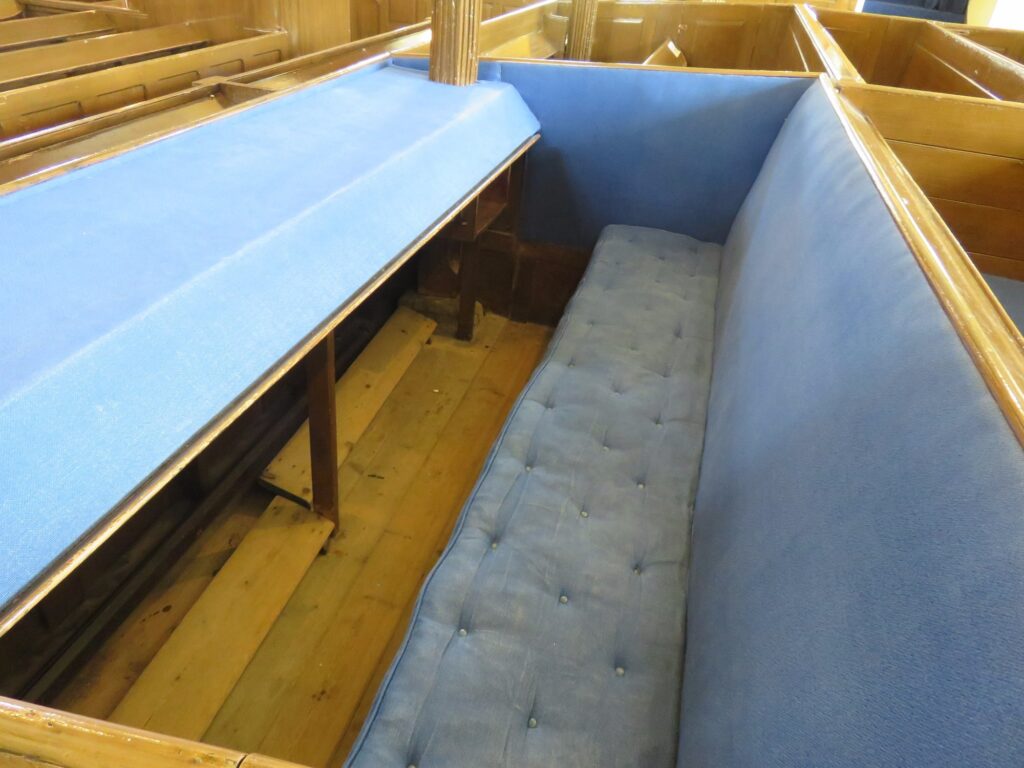
A pew with extra legroom so that the shepherd can bring his dog to church. Plenty of room for the dog to lay at their feet.
The Organ
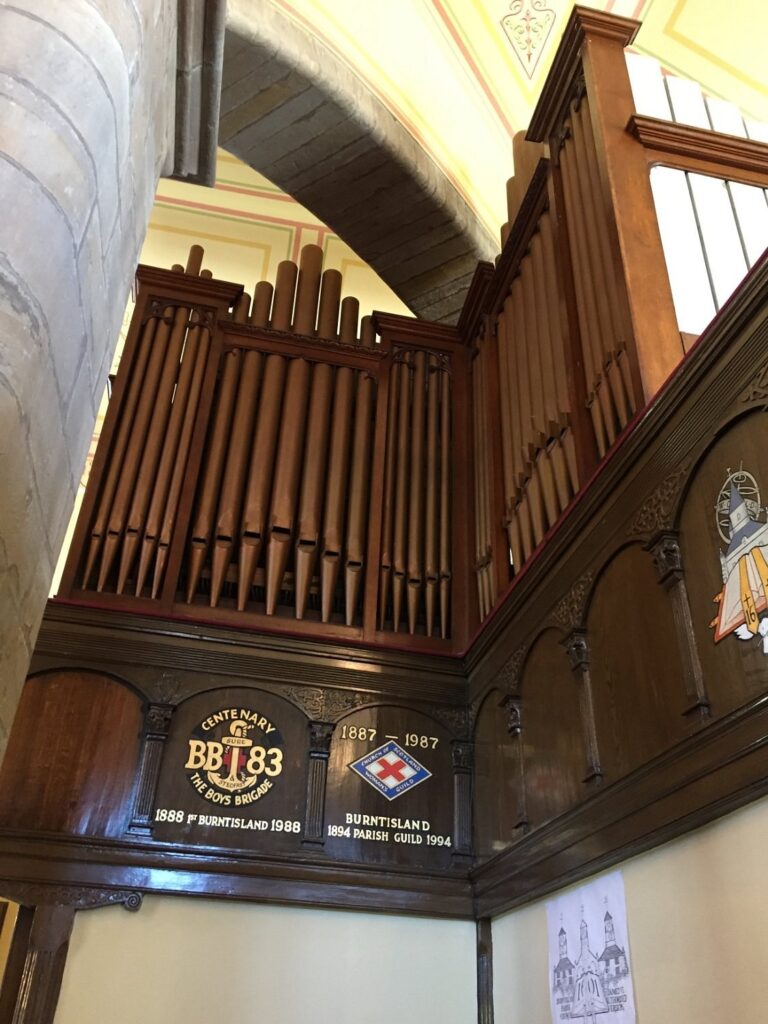
The organ in Burntisland Parish Church was gifted to the church by local philanthropist Andrew Carnegie in 1908.
Magistrates Pew
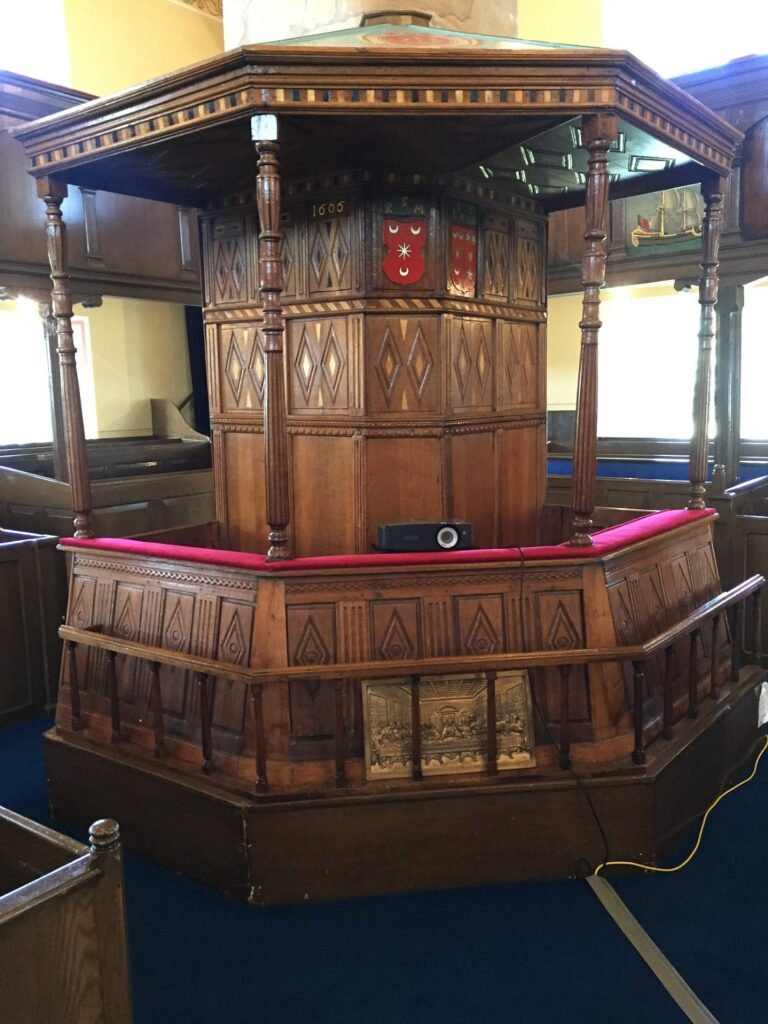
The magistrates' pew was originally built for Sir Robert Melville, Rossend Castel in 1606. It was later used for the magistrates of the town for the "Kirkin' o the council". It is now used for the overhead projector.
Pumfil Pews
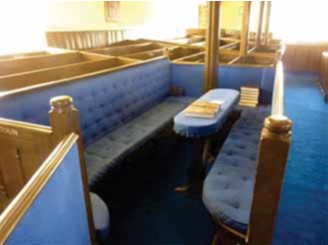
These box pews or pumfil pews were reserved for particular families or guilds. The families faced the pulpit, whereas the servants sat with their backs to the pulpit.
Painted Ceiling
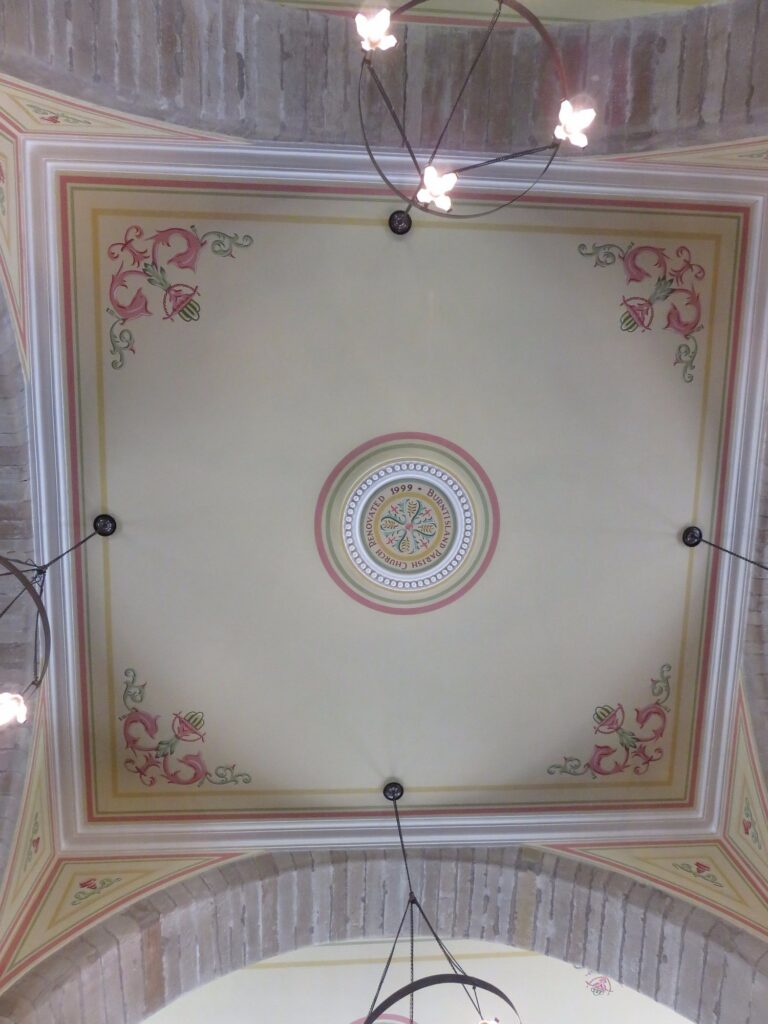
The ceilings in Burntisland Parish Church were painted by local painter David Ferguson in the 1990's when the church was renovated. The murals and friezes were copied from a painting by Andrew Young dated 1913 and restored the ceiling to its former splendour.
Baskerville Bible

The Baskerville Bible is considered by some historians to be the most elegant King James Bible ever produced and the highpoint in English Bible printing. Burntisland Parish Church has one of only six Baskerville Bibles in the world. This was donated by the local provost William Ferguson of Raith in 1778.
